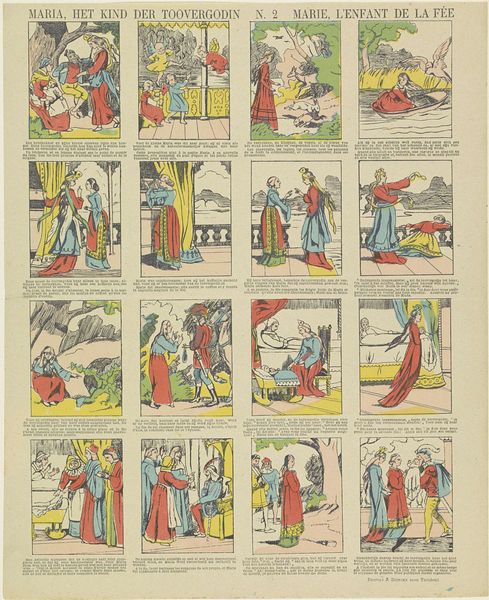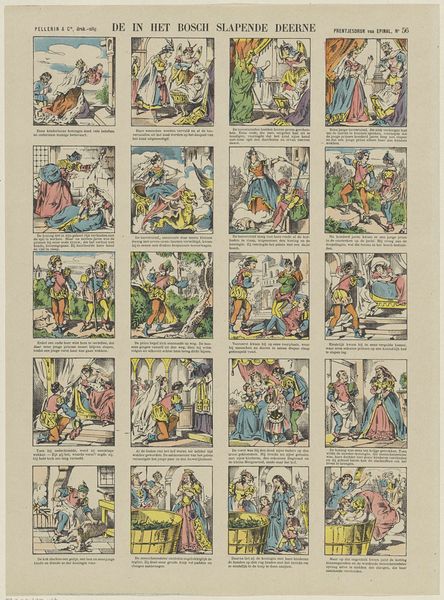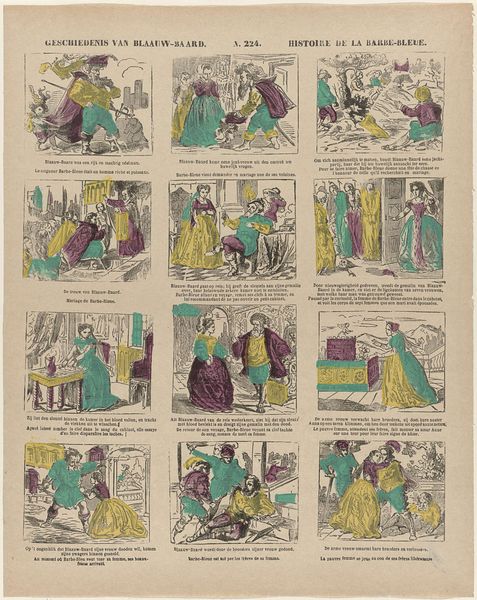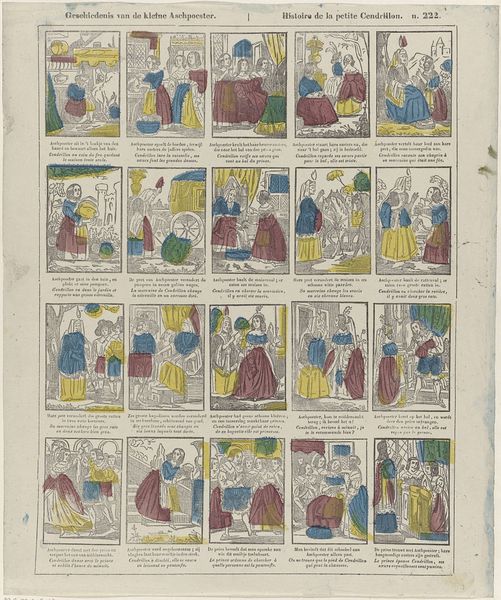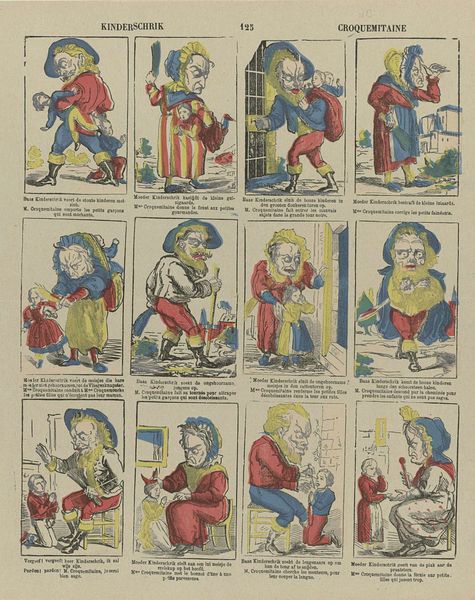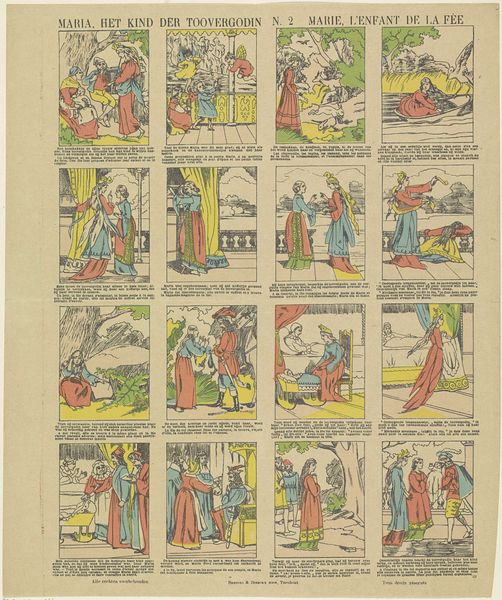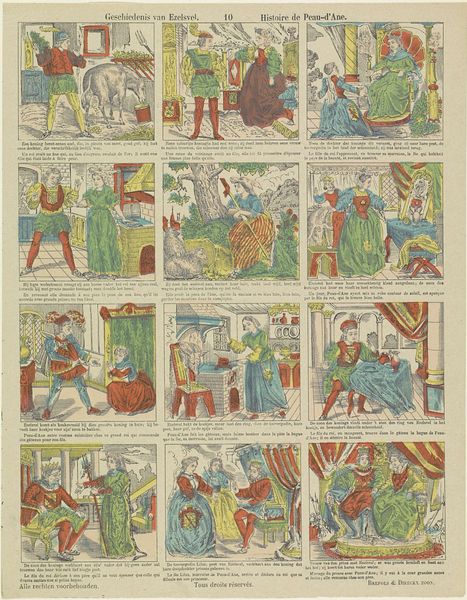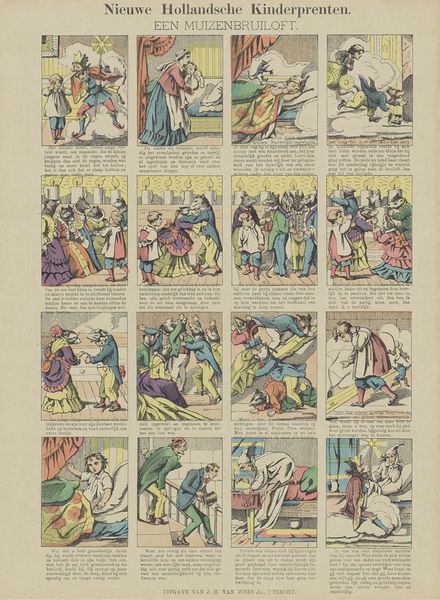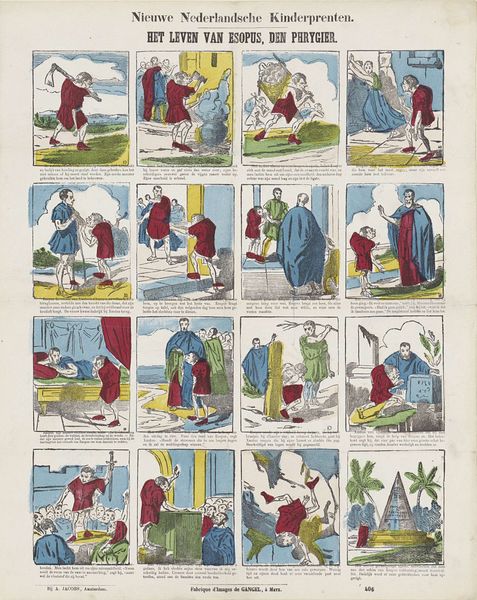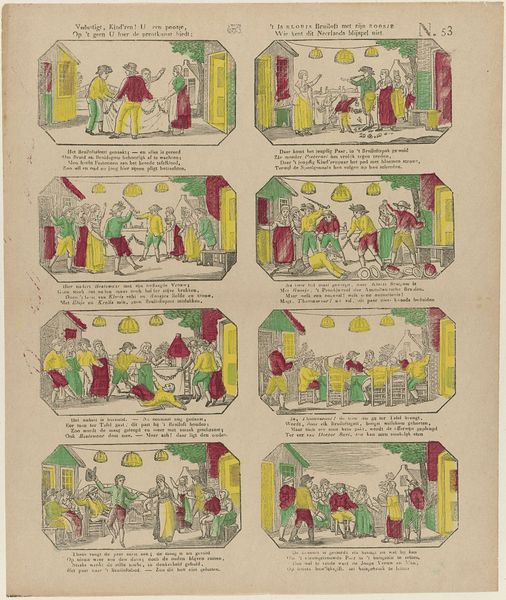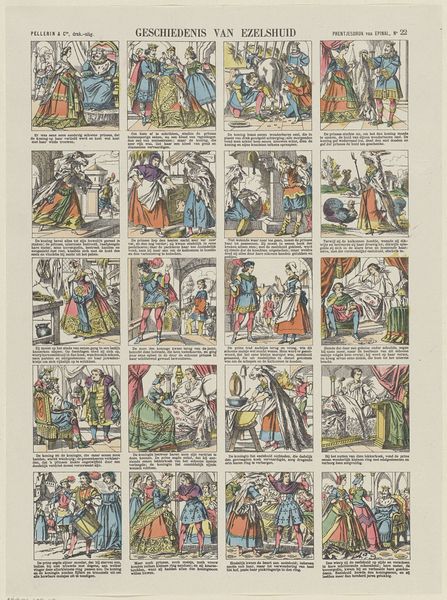
print, engraving
#
narrative-art
# print
#
figuration
#
history-painting
#
engraving
#
miniature
Dimensions: height 383 mm, width 337 mm
Copyright: Rijks Museum: Open Domain
This is a page of religious images, printed by Philippus Jacobus Brepols in the early 19th century. Look closely, and you can see it’s not fine art; it’s cheap, mass-produced devotional imagery. The printing process is key here. Each image was likely etched into a metal plate, then inked and pressed onto paper. The flat, graphic style is a direct result of this technique. The limited color palette – primarily red, blue, and yellow – would have been chosen for ease and economy of production. These weren’t unique works of art, but rather, affordable items meant for personal contemplation. They served as reminders of faith in everyday life, connecting the viewer to a larger spiritual narrative. Consider the social context: the Industrial Revolution was gaining momentum, and printing technologies were becoming more accessible. This meant religious imagery, once carefully hand-painted and available only to the wealthy, could now be disseminated widely. This piece reveals how devotional practices became democratized through the possibilities of mechanical reproduction. Ultimately, it challenges our assumptions about what art is and who it's for.
Comments
No comments
Be the first to comment and join the conversation on the ultimate creative platform.
